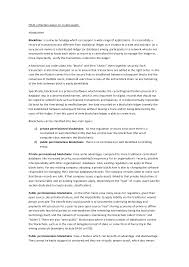If you are wondering how to write a literature review paper, there are several things you need to remember. There are several components to consider, including the Length, Content, and Author’s research orientation. You can get started on your research by reading article reviews to compile keywords. However, article reviews should not be used as the foundation of your literature review paper. Here are some tips to follow:
Structure
The structure of a literature review consists of three parts: introduction, body, and conclusion. The introduction introduces the topic and defines important terms. It may also highlight important trends in previous publications, conflicts in theory, or gaps in research. The body of the review should summarize key arguments in the body and preview the conclusion. The conclusion, in turn, summarizes the main points of the study and draws conclusions. Once the body of the review is finished, the conclusion should be written.
The body of the literature review includes the main points of each of these sections. In order to write an effective literature review, it must incorporate synthesis and summary. The summary is a concise overview of the most important details; while synthesis reorganizes the information to give it new meaning. The body of a literature review may be an independent paper or part of a larger one. Here are some guidelines:
Content
How to write a literature review is not just a catalogue of sources; it must be structured to compare the treatment of ideas. Often, literature reviews are organized thematically, with themes forming the focus of the study. Thematic reviews are written in the style of academic essays and include a guiding concept or hypothesis. To be effective, the review must be well-structured and include a thesis statement, guiding concept, or research question.
Also Read: Good Titles For College Essays
A literature review should contain the ideas, contributions, and opinions of the author. It should also tell a specific story. It is an excellent way to turn a complex network of related works into a focused review of literature. For this, you should check style guidelines and the journal’s “Guide for Authors” page. If there is no specific style guide for a particular journal, it is OK to cite the style guidelines found there.
Length
The length of a literature review paper will vary depending on the type of project you are writing, level of study and the overall project length. It is best to refer to the instructions provided by your professor to make sure you get the assignment done right and know exactly how long it should be. Listed below are some tips to help you determine the proper length of your literature review paper. This article also offers some general guidelines to follow when writing a literature review.
– Organization: Your literature review can be thematic and organized by different aspects of the topic. For example, a literature review on women in religion can discuss key themes about women’s inclusion in church settings and the attitude of religious groups toward women. – Thematic Organization: Your literature review can be structured chronologically or categorically, or you can use the literature to create a theoretical framework. Discuss different theories, models, and definitions of key concepts and arguments.
Author’s research orientation
Before you begin to write a literature review, it is important to consider the orientation of the researcher’s research. Are you critical, interpretive, or a mix of approaches? If so, you will need to define your theoretical framework and its relationship to the research perspective. It is also necessary to evaluate relevant literature, including any that takes positions contrary to your own. A literature review template can be helpful in this process.
The aim of a literature review is to assess the quality and validity of scholarly publications. It should provide a summary of the main sources, assess their quality, and identify critical gaps. Organize your review around the guiding idea or theme of your research. Depending on the topic, you may choose to organize your review chronologically or thematically. Chronological order emphasizes the progression of research in the field.
Format
A literature review should include a short summary of each article or study. It should also critically evaluate the study’s findings, identifying gaps and contradictions. The authors should incorporate references to other sources into their own words, while defining major contradictions and gaps. The writer should also discuss the pros and cons of various approaches, if any. If a literature review is part of a larger project, it is important to discuss its relevance and limitations.
A literature review can be a critical analysis or an outline of prior work. It may be a comparison of prior research or critique of existing theories. Often, literature reviews are organized chronologically, categorically, or by authors or groups of studies with common denominators. Sometimes, authors include contrasting or overlapping views of a particular subject. A literature review should include all relevant texts. When evaluating literature, it is important to note the authors’ credentials and influence.



